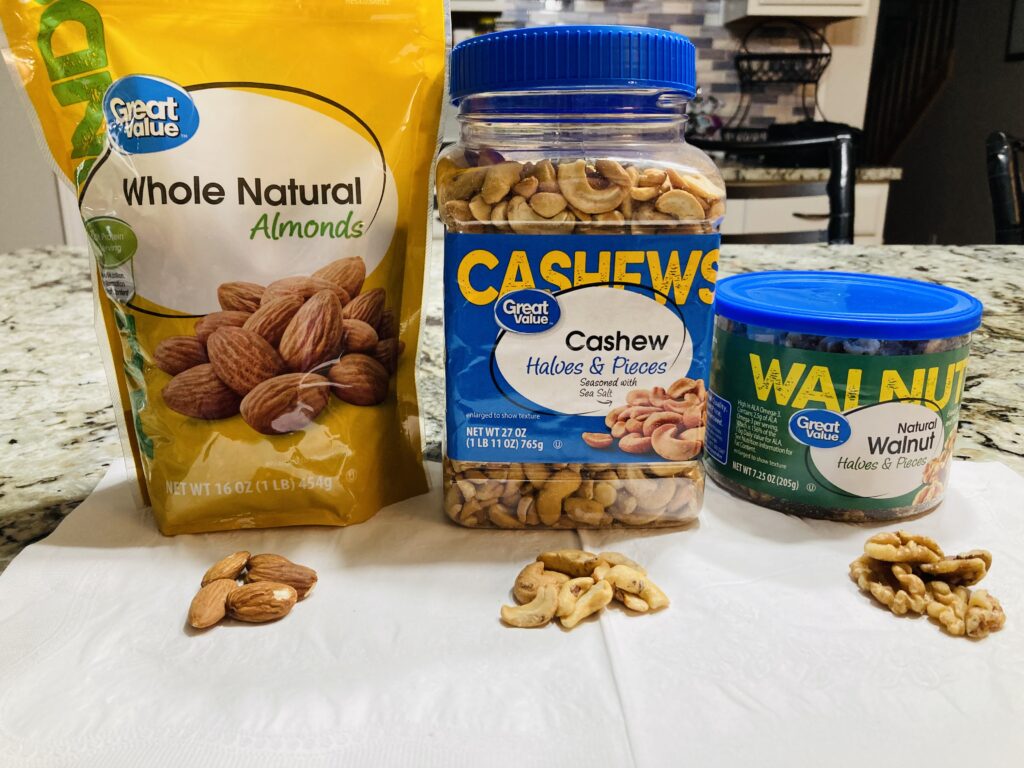Beef and chicken broth are both flavorful liquid bases used in cooking. They are typically made by simmering meat, bones, vegetables, and aromatics in water. While they share some similarities, they also have distinct characteristics.

3 Main Characteristics of beef vs chicken broth
Beef Broth
- Flavor Profile: Beef broth has a rich, robust, and hearty flavor due to the beef bones and meat used in its preparation. It often has a deeper umami taste.
- Ingredients: It is made by simmering beef bones, along with optional meat (such as beef shanks or stew meat), vegetables, and herbs.
- Common Uses: It is commonly used in dishes like stews, soups, sauces, and gravies where a strong beef flavor is desired.
Chicken Broth
- Flavor Profile: Chicken broth has a lighter, more delicate flavor compared to beef broth. It is often described as milder and sweeter.
- Ingredients: It is made by simmering chicken pieces (such as a whole chicken or chicken parts like wings or backs), along with vegetables and herbs.
- Common Uses: Chicken broth is versatile and can be used as a base for a wide range of dishes, including soups, sauces, risottos, and as a cooking liquid for rice or grains.
Key Nutritional Content of Beef vs Chicken broth
- Protein: Beef broth tends to have slightly more protein due to the higher protein content in beef compared to chicken.
- Fat Content: Beef broth may contain more fat, especially if it’s made with meatier cuts, whereas chicken broth tends to be leaner.
| Beef Broth (1 cup, about 240 ml): Calories: 17 kcal Protein: 3.6 grams Fat: 0.2 grams Carbohydrates: 0 grams Fiber: 0 grams Sugars: 0 grams Sodium: 900-1000 mg (varies based on preparation) Vitamins and Minerals: Beef broth is a source of various minerals such as calcium, phosphorus, magnesium, and potassium. It also contains small amounts of B vitamins like B12, niacin, and riboflavin | Chicken Broth (1 cup, about 240 ml): Calories: 10 kcal Protein: 1 gram Fat: 0.2 grams Carbohydrates: 1 gram Fiber: 0 grams Sugars: 0 grams Sodium: 860-920 mg (varies based on preparation) Vitamins and Minerals: Chicken broth provides some essential minerals like calcium, phosphorus, magnesium, and potassium. It also contains small amounts of B vitamins such as niacin and riboflavin. |
It’s important to note that the nutritional content of homemade broths can vary depending on factors like the specific ingredients used and the cooking process. Additionally, commercially prepared broths may have added ingredients like flavorings, preservatives, and sodium, which can affect their nutritional profiles.
Both beef and chicken broths are relatively low in calories and fat, making them a good choice for adding flavor to dishes without significantly increasing the overall calorie content. They are also good sources of minerals, particularly electrolytes like sodium and potassium, which are important for maintaining proper fluid balance in the body.
Remember, while broths can be nutritious, they are not complete meals on their own and should be used as part of a balanced diet. If you have specific dietary concerns or restrictions, it’s always a good idea to consult with a healthcare professional or registered dietitian for personalized advice.

Flavor of beef broth vs flavor of chicken broth
Beef Broth:
- Rich and Robust: Beef broth tends to have a rich, hearty, and robust flavor. This is because it’s made from simmering beef bones, meat, and sometimes vegetables over an extended period of time.
- Umami Notes: It often has prominent umami notes, which are savory and earthy flavors. This comes from compounds like glutamate found in beef.
- Deeper, Meaty Flavor: The presence of beef imparts a more pronounced meaty taste compared to chicken broth.
- Slightly Fatty: Depending on the cut of beef used, there might be a slight amount of fat in the broth. This can add to the richness and mouthfeel.
- Potentially Gamier: If the beef used includes cuts like oxtail or marrow bones, there may be a slightly gamier taste, which some people enjoy.
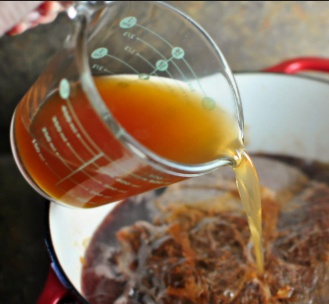
beef broth
Chicken Broth:
- Lighter and Fresher: Chicken broth has a lighter and fresher taste compared to beef broth. It is generally considered more delicate.
- Mild Umami: While chicken lacks the strong umami presence of beef, it still contains glutamate and imparts a mild umami flavor to the broth.
- Sweeter Notes: Chicken broth may have subtle natural sweetness, especially if vegetables like carrots or onions are used in the preparation.
- Less Fatty: Chicken broth tends to have less fat compared to beef broth, especially if you remove the skin and excess fat from the chicken before making the broth.
- Less Gamey: Chicken has a milder and less gamey taste compared to beef, which can make chicken broth more approachable for some palates.
- Versatile Base: Because of its milder flavor, chicken broth can be a versatile base for a wide range of dishes, allowing other flavors to shine through.
Health Considerations for beef and chicken broth
- Nutrients: Both broths can be nutritious, providing minerals like calcium, magnesium, and phosphorus, as well as gelatin (collagen). These can be good for joint health and digestion.
- Salt Content: Store-bought broths often contain added salt, so if you’re watching your sodium intake, you might want to look for low-sodium options or make your own.
Impact of beef and chicken broth on joint health
Both beef and chicken broths can have positive impacts on joint health, primarily due to the presence of various nutrients and compounds that support joint function. Here are some ways in which beef and chicken broths can contribute to joint health:
- Collagen Content: Both beef and chicken broths are rich in collagen, which is a protein that makes up a significant portion of our joints, tendons, ligaments, and cartilage. Consuming collagen-rich broths may help support joint health and potentially reduce joint pain.
- Gelatin: When collagen is cooked, it breaks down into gelatin. Gelatin contains amino acids like proline and glycine, which are essential for maintaining healthy joints. These amino acids are important for the synthesis of collagen and other structural proteins in the body.
- Anti-Inflammatory Properties: Broths contain various nutrients and compounds, such as amino acids, vitamins, and minerals, that possess anti-inflammatory properties. Chronic inflammation is a major factor in joint pain and conditions like arthritis. By reducing inflammation, broths can potentially alleviate joint discomfort.
- Mineral Content: Broths are often made with bones, which are rich in minerals like calcium, magnesium, and phosphorus. These minerals are crucial for maintaining strong and healthy bones, which are essential for overall joint health.
- Glycosaminoglycans (GAGs): These are complex carbohydrates found in connective tissues. They play a significant role in maintaining the structural integrity of joints and can be found in broths, especially when they’re made from cartilaginous cuts of meat.
- Improved Digestion: Proper digestion is important for absorbing the nutrients that support joint health. Broths are easily digestible and can help soothe the digestive tract, making it easier for the body to absorb essential nutrients.
- Hydration: Staying hydrated is crucial for joint health. Broths are liquid-based and can help maintain proper hydration levels, which in turn supports joint function.
- Glucosamine and Chondroitin: These are compounds that are often taken as supplements to support joint health. They are naturally present in bone broths, especially if the broth is made with cartilage-rich cuts.
While beef and chicken broths can provide these benefits, it’s important to note that they should be part of a balanced diet that includes a variety of nutrients from different sources. Additionally, individual responses may vary, so if you have specific concerns about joint health, it’s advisable to consult a healthcare professional for personalized advice and treatment options.
Easy Culinary Applications of beef and Chicken broth
- Substitution: In many recipes, beef and chicken broth can be used interchangeably, but be aware that it will affect the final flavor of the dish.
- Pairing: Beef broth pairs well with heartier dishes like beef stews, while chicken broth complements lighter dishes like chicken noodle soup.
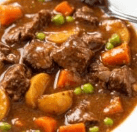
| Beef Broth | Chicken Broth |
| 1.Rich Flavor Base: Beef broth has a deep, robust flavor due to the rich, meaty essence of beef bones and cuts used in its preparation. It lends itself well to hearty dishes. 2.Ideal for Red Meat Dishes: Beef broth is a natural complement to dishes featuring red meats like beef, lamb, and venison. It enhances the savory notes in these dishes. 3.Stews and Braises: It’s excellent for making hearty stews, pot roasts, and braised dishes. The strong flavor holds up well to long cooking times. 4.French Onion Soup: Classic French onion soup is traditionally made with beef broth for its intense umami flavor. 5.Pho: In Vietnamese cuisine, beef broth is a key component of pho, a popular noodle soup. 6.Gravy for Red Meat: It’s commonly used as a base for making gravy to accompany roast beef or other red meat dishes. | 1.Lighter, Milder Flavor: Chicken broth has a lighter, more delicate flavor compared to beef. It’s versatile and pairs well with a wide range of ingredients. 2.Poultry Dishes: It’s perfect for dishes featuring chicken, turkey, and other poultry. The mild flavor allows the natural taste of the poultry to shine through. 3.Soup Base: Chicken broth is a classic base for a variety of soups, including chicken noodle soup, vegetable soup, and cream-based soups. 4.Risotto and Pilaf: It’s commonly used as the cooking liquid for risotto and pilaf, imparting a subtle, savory taste. 5.Poaching Liquid: It’s an excellent liquid for poaching chicken or other proteins, as it infuses them with a delicate flavor. 6.Sauces and Gravies: It’s often used as a base for sauces and gravies in recipes that don’t require a strong meaty flavor. 7.Ramen: While traditional ramen broth is more complex, a chicken broth can be used as a base for a simplified version of this popular Japanese dish. 8.Lighter Dishes: Chicken broth works well in dishes where a lighter flavor profile is desired, such as lighter soups and dishes with seafood or vegetables. |
Ultimately, the choice between beef and chicken broth comes down to personal preference and the specific flavor profile you want to achieve in your dish. Some recipes may specifically call for one or the other, so it’s a good idea to follow the guidance provided in the recipe.
Differences of beef broth vs chicken broth
Beef Broth:
- Base Ingredient:
- Made from simmering beef bones, often with some meat still attached, along with vegetables and seasonings.
- Flavor Profile:
- Richer, heartier, and more robust flavor due to the beef and marrow in the bones.
- Color:
- Usually darker, ranging from light brown to deep brown.
- Nutritional Content:
- Higher in protein and certain minerals like iron.
- Gelatinous Texture:
- Tends to become more gelatinous when cooled due to the presence of collagen.
- Versatility:
- Pairs well with heartier dishes like stews, braises, and gravies. Used in various cuisines including Asian, European, and American.
- Culinary Applications:
- Commonly used in dishes like beef stew, French onion soup, and recipes with red meat.
- Sodium Content:
- Sodium levels can vary, but generally can be high in canned or store-bought versions.
Chicken Broth:
- Base Ingredient:
- Made from simmering chicken bones, along with meat, skin, and often vegetables and seasonings.
- Flavor Profile:
- Milder, lighter flavor with a subtle poultry taste.
- Color:
- Generally lighter, usually a pale golden or yellowish hue.
- Nutritional Content:
- Typically lower in calories and fat.
- Gelatinous Texture:
- Can become somewhat gelatinous but usually to a lesser extent than beef broth.
- Versatility:
- Versatile option that complements a wide range of recipes. Commonly used in soups, risottos, sauces, and as a base for various dishes.
- Culinary Applications:
- Widely used in recipes like chicken noodle soup, rice dishes, and recipes that feature poultry.
- Sodium Content:
- Sodium levels can vary, but generally can be high in canned or store-bought versions.
Availability and cost of beef and chicken broth
please note that prices and availability can vary significantly based on location, economic conditions, and other factors.
- Availability:
- Grocery Stores: Beef and chicken broth are commonly available in most grocery stores. They can be found in the soup aisle or in the section with canned and boxed goods.
- Specialty Stores: Some specialty or gourmet stores might carry higher-quality or organic varieties of broth.
- Online Retailers: Many online retailers, such as Amazon, walmart also offer a wide selection of beef and chicken broth.
- Cost:
- Canned Broth: In 2021, a typical 14-ounce can of beef or chicken broth could cost anywhere from $1 to $3 USD. Organic or specialty brands tend to be more expensive.
- Boxed Broth: Boxed broths are often sold in larger quantities (32 ounces or more) and may be priced between $2 to $6 USD per box, depending on the brand and whether it’s organic.
- Bulk or Specialty Broths: High-end or specialty broths, like bone broth, can be considerably more expensive, sometimes ranging from $5 to $15 or more for a single container.

Dietary Considerations for Beef and chicken broth
Here are some diets for which broth can be a suitable component:
- Standard Balanced Diet:
- Broth can be a healthy addition to a standard balanced diet. It provides hydration, vitamins, and minerals without being overly calorically dense.
- Paleo Diet:
- Broth, especially bone broth, is often included in the Paleo diet due to its natural, whole-food ingredients. It’s rich in nutrients and aligns with the principles of this diet.
- Keto Diet:
- Broth can be an excellent choice for those following a ketogenic diet. It’s low in carbs and can help with electrolyte balance, which is important on a low-carb diet.
- Low-Carb Diet:
- Broth, particularly clear broth, is low in carbohydrates and can be included in a low-carb diet without significantly affecting your carb intake.
- Gut-Healing Diets (e.g., GAPS, SCD, AIP):
- Broths, especially bone broth, are often recommended in gut-healing protocols due to their high collagen content, which can support gut health.
- Fasting and Detox Diets:
- Broth can be a beneficial component of fasting or detox diets. It provides essential nutrients and can help maintain electrolyte balance during periods of restricted food intake.
- Vegetarian and Vegan Diets:
- Vegetable broth or mushroom broth are suitable for vegetarian and vegan diets. They provide a flavorful base for soups and stews without using animal products.
- Low-Sodium Diet:
- If you’re on a low-sodium diet, you can opt for low-sodium or sodium-free broth options to control your sodium intake.
- Specific Carbohydrate Diet (SCD):
- Broths, particularly homemade bone broths, are often recommended on the SCD due to their nutrient density and potential benefits for gut health.
- Liquid Diet or Soft Diet:
- Broth can be an essential component for individuals on a liquid diet or a soft diet, providing nutrients and hydration in an easily digestible form.
- Carnivore Diet:
- Bone broth is often considered acceptable on a carnivore diet, as it is made from animal bones and connective tissues.
Remember, it’s important to choose broths that align with the specific requirements of each diet. For example, if you’re on a low-sodium diet, opt for low-sodium broth. Additionally, consider making homemade broth whenever possible to have more control over the ingredients and nutrients. Always consult with a healthcare professional or registered dietitian before making significant changes to your diet, especially if you have specific health concerns or dietary restrictions.

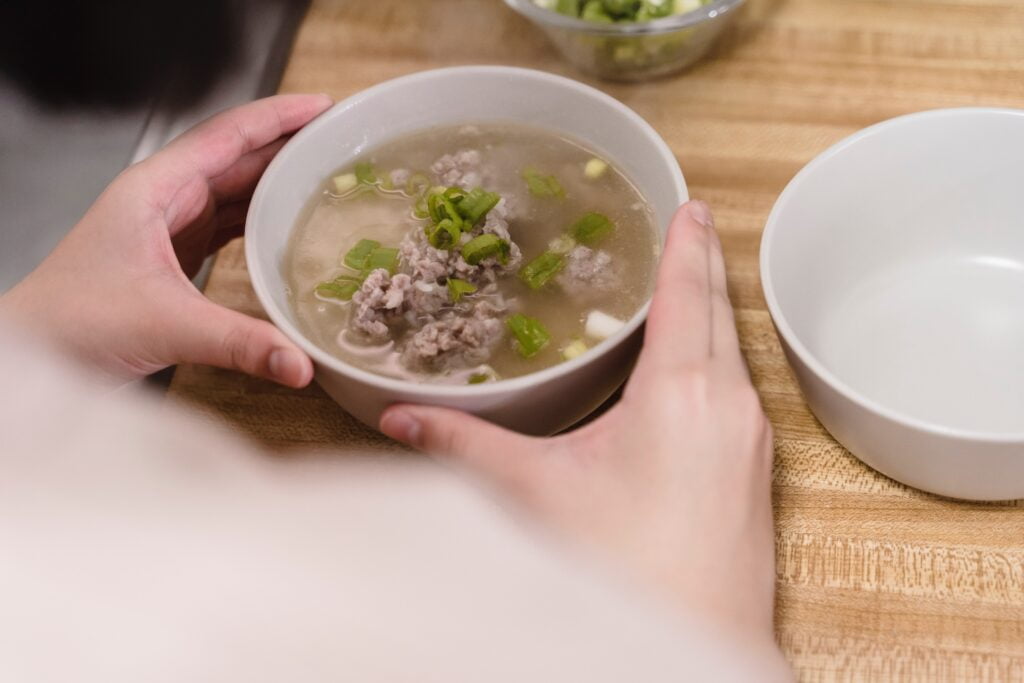
Environmental impact of beef broth production vs chicken broth production
To make beef and chicken broth, cattle and chickens, are raise which are then processed for their meat. The bones, along with any remaining meat scraps, are used to create broth. It’s important to note that the quality of the meat and bones used can significantly affect the flavor and richness of the broth. Different cuts and types of beef may result in variations in taste and texture of the broth.
| Environmental Impact of Beef Production: | Environmental Impact of Chicken Production: |
| Water Usage: Beef production requires large amounts of water, both for the animals themselves and for growing their feed. It’s estimated that it takes thousands of gallons of water to produce one pound of beef. Land Use: Beef farming requires significant land for grazing and growing feed crops. This can lead to deforestation and habitat destruction, especially in regions where forests are cleared for pasture. Greenhouse Gas Emissions: Livestock farming, particularly beef production, is a significant contributor to greenhouse gas emissions. Cattle produce methane, a potent greenhouse gas, as part of their digestive process. Feed Production: The production of feed crops for cattle often involves the use of chemical fertilizers and pesticides, which can lead to soil and water pollution. Waste Management: The handling of manure from beef cattle can be an environmental concern if not managed properly. Improper disposal can lead to pollution of waterways and soil. Transportation and Processing: The transportation of beef, as well as the energy-intensive processes involved in meatpacking and distribution, contribute to the overall environmental footprint. | Water Usage: Chicken production generally requires less water compared to beef, but it’s still a significant factor. Water is needed for the birds themselves and for growing their feed. Land Use: Chickens can be raised in more confined spaces compared to cattle, which reduces the land footprint per unit of meat produced. However, there are still environmental concerns related to land use, especially regarding feed production. Greenhouse Gas Emissions: While chickens produce fewer greenhouse gases compared to cattle, they are not without impact. Methane and nitrous oxide emissions can occur in poultry farming. Feed Production: The production of feed for chickens can involve similar environmental issues as with beef, including the use of chemical inputs. Waste Management: Proper disposal of chicken waste is important to prevent pollution, though the scale of waste management tends to be smaller compared to large-scale cattle farming. Transportation and Processing: Similar to beef, there are energy and emissions associated with the transportation and processing of chicken. |
Easy recipe for home made broth
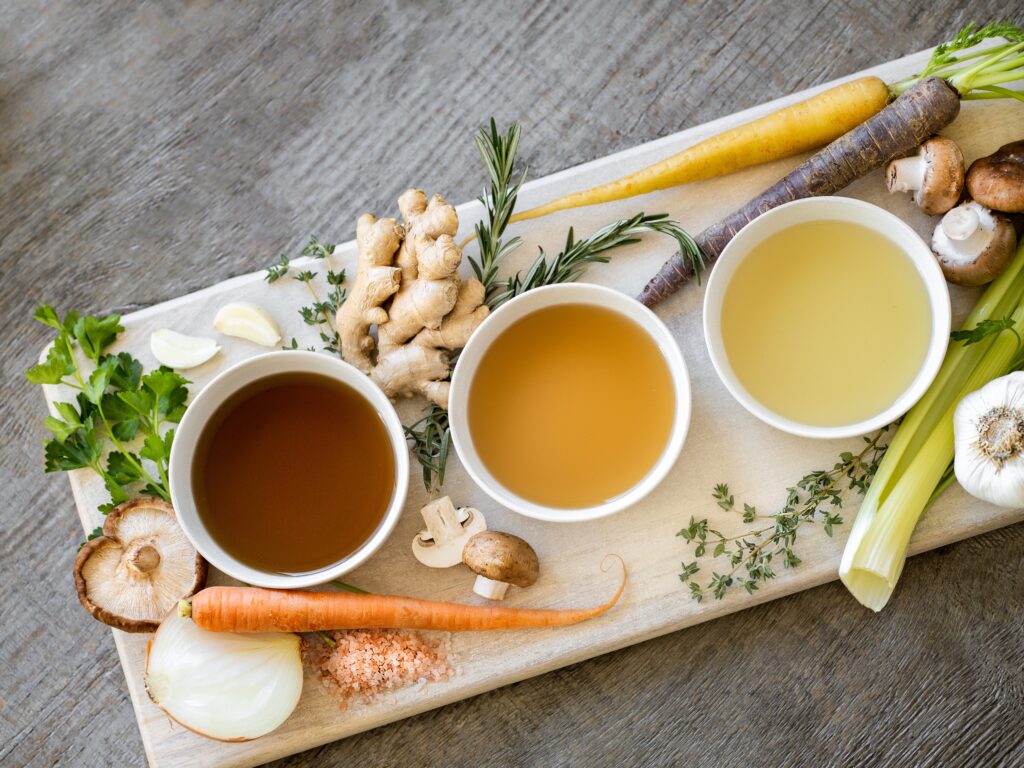
Ingredients
3.5 lbs. of beef bones, such as oxtail, short rib, knuckle and shank.
2.5 stalk Celery, Cut into 2 inch pieces.
1 large onion, diced
1 medium leek- roots trimmed off, cleaned and cut into 2-inch pieces.
1 whole head garlic, halved crosswise.
Instructions
- Combine Ingredients in a Pot:
- Place the roasted or unroasted bones in a large stockpot. Add the chopped vegetables, garlic, and any optional herbs.
- Add Water and Vinegar:
- Pour enough water into the pot to cover all the ingredients. If you’re using vinegar, add it now. The acidity helps extract minerals from the bones.
- Simmer and Skim:
- Bring the mixture to a gentle boil and then reduce the heat to low. Allow it to simmer for at least 8-12 hours for chicken bones, or up to 24-48 hours for beef bones. The longer it simmers, the more flavorful and nutritious it will be.
- Periodically skim off any foam or fat that rises to the top.
- Strain the Broth:
- Once you’re satisfied with the flavor and richness of the broth, remove it from heat and let it cool slightly.
- Use a fine-mesh strainer or cheesecloth to strain out the solids, leaving only the liquid.
- Season and Store:
- Add salt and pepper to taste. You can also let it cool completely in the fridge, which makes it easier to remove any excess fat that solidifies on the surface.
- Store the broth in airtight containers in the refrigerator for up to 5 days, or freeze it for longer storage.
Remember, this is a basic recipe. You can customize it to your liking by adding other herbs, spices, or vegetables. The key is to use quality ingredients and allow the broth to simmer for an extended period of time to extract as much flavor and nutrition as possible from the bones. Enjoy your homemade broth.
7 easy steps to store home made Broth
- Allow the chicken broth to cool to room temperature before storing it in the refrigerator.
- Transfer the cooled broth into airtight containers, preferably made of glass or BPA-free plastic to ensure food safety and prevent any reactions with the broth. Quart mason jars are a personal preference.
- When filling the containers, leave sufficient headspace, approximately an inch at the top, to accommodate any expansion as the broth cools.
- Label each container with the date and a description of the contents to help track freshness.
- Store the labeled containers in the refrigerator.
- Keep in mind that homemade chicken broth typically maintains quality for about a week in the fridge. However, actual shelf life may vary based on ingredients and preparation methods.
- If you detect any signs of spoilage, such as a sour odor, mold growth, or an unusual taste, promptly discard the broth to ensure food safety.
Resources
https://en.wikipedia.org/wiki/Broth
https://pubmed.ncbi.nlm.nih.gov
https://www.webmd.com/diet/health-benefits-bone-broth
Book: Bone Broth Secret: A Culinary Adventure in Health, Beauty, and Longevity written by Heather Dane .






